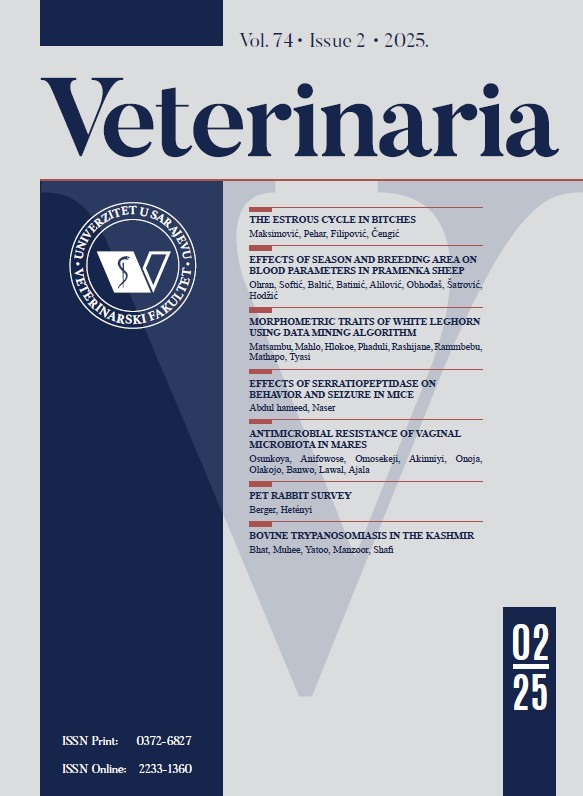Chlamydia abortus in dairy cattle: Serostatus and risk factors in Algerian northeastern high plateaus
DOI:
https://doi.org/10.51607/22331360.2022.71.1.61Keywords:
Chlamydiosis, dairy cows, risk factors, seroprevalenceAbstract
Chlamydia abortus is a zoonotic abortifacient bacterium causing a large variety of diseases with detrimental economic impact, mainly in ruminants. A total of 345 cows belonging to 42 herds were randomly sampled to conduct a cross sectional study, aiming to establish the seroprevalence of this pathogen (using iELISA test) and its associated risk factors (through a questionnaire) in dairy cattle from Oum-El-Bouaghi and Setif provinces (Northeastern Algerian high plateaus). All over the studied zone, specific chlamydial antibodies were detectable in 58 cows (16.8%) belonging to 13 infected herds (30.9%). The individual animal seroprevalence ranged from 12.6% (18/143) to 19.8% (40/202) in Oum-El-Bouaghi and Setif respectively and the herd one varied from 30% (06/20) to 31.8% (07/22) as well. At the herd level, none of the tested factors had an effect on chlamydial antibodies prevalence; while at the individual animal level, associations (univariately evaluated with p<0.05) were recorded for herd size, deficient disinfection and origin of cows and feed. Multivariable logistic regression analysis revealed origin of cows to be protective and history of infertility as potential risk factor in Setif only. These results are clear evidences that C. abortus is endemic in our dairy cattle population, in which it plays some role in their decreased reproductive performances.
Downloads
Published
How to Cite
Issue
Section
License
Copyright (c) 2022 Pr. Sana Hireche, Pr. Amir Agabou, Dr. Brahim El Khalil Bounab

This work is licensed under a Creative Commons Attribution 4.0 International License.








